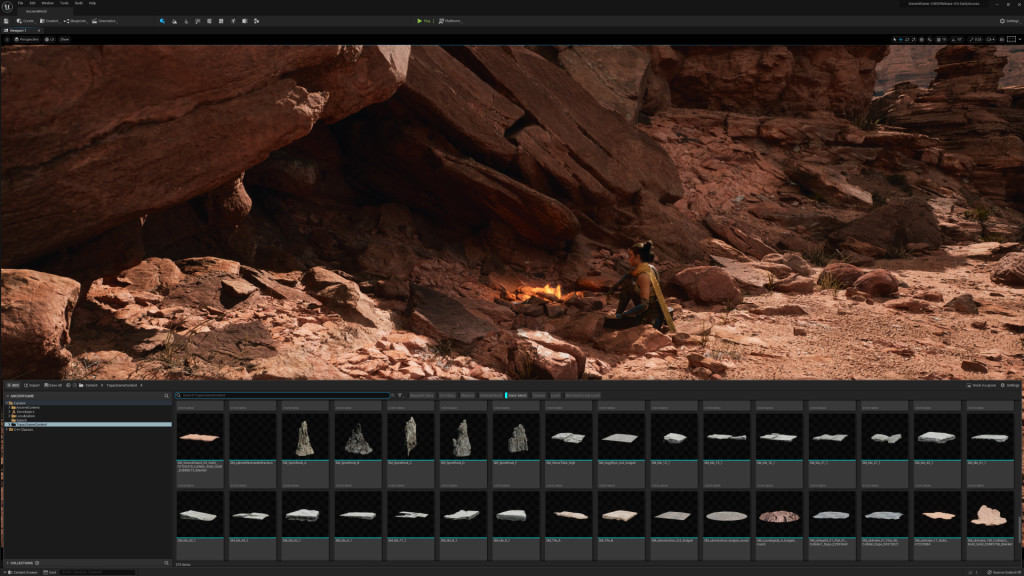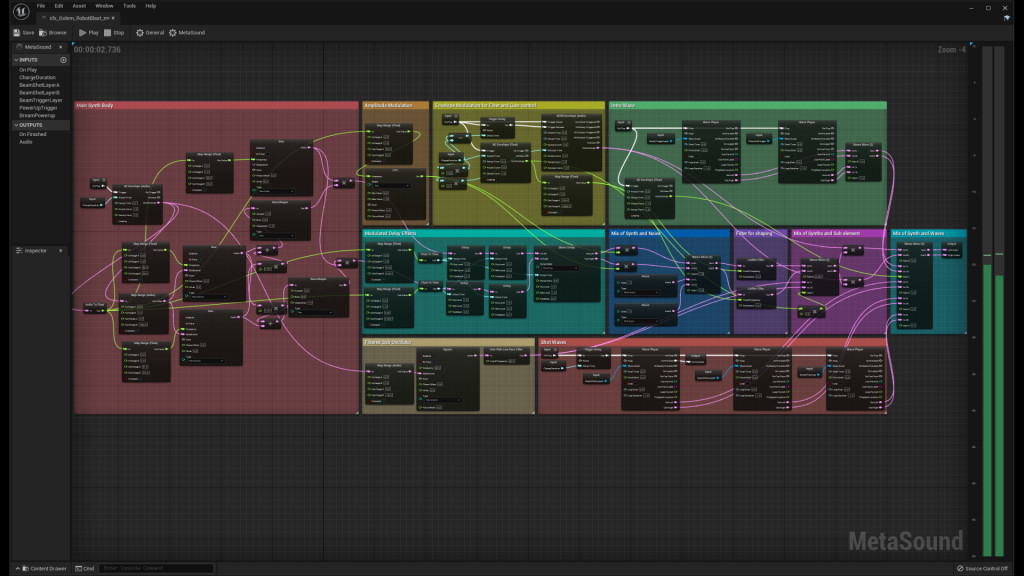It makes beautiful, realistic… canyons. It makes games. It does incredible things with light. And oh yeah – surprise. This game engine also boasts a powerful, patchable DSP sound engine inside, blurring the line between game, graphics, and audio tool. It’s all positively Unreal. Um, 5. Early Access.
Unreal Engine has rapidly moved from being something just game creators used to a real-time engine of choice across a range of use cases – now extending even to motion graphics, visual effects, and art. And even though rival Unity tended to lay claim to artists and experimentalists first, Unreal’s sheer power and multimedia depth is starting to make it look like the tool to beat.
Oh yeah – plus deep inside Unreal is an entire native DSP graph with patchable interface, a complete modular sound (and by extension, music) environment. That’s a bit like finding there was an extra room in your apartment, and in that room was a Mac workstation, a Fairlight desk, and a Buchla, for some reason. Unexpected? Yes. Using it now? Well, sure! Say again – this thing is free? Okay.
But first, yes, in case you didn’t see it last year or again today, you can make really nice photorealistic canyons and things. And while Unreal Engine 5 is still labeled “Early Access” and newcomers are strongly encouraged to learn in the stable Unreal 4 branch, there is now software you can go and use.
We now know more about what it does, which is – a whole hell of a lot.

Nanite. This is the “virtualized micropolygon geometry system,” which in lay terms means “whole s*** ton of high-speed geometry” or “oh that canyon is totally f***ing generated.” My Kentucky drawl comes back, and I say basically, “well garsh, look at all ’em there rawwwwks.”
Now, in case you don’t need to generate a s*** ton of rocks, the ability to work this way is also just as valid if the geometry was generated by a ZBrush or (crucially, since we’re scanning everything these days) some scans. Yes, that also means weird things you’re doing with your iPhone might now also get rendered more quickly. This is probably a very dangerous tool in the hands of people who don’t know what they’re doing (why is everyone looking at me all of a sudden?), but to those who do know what to do with millions of polygons, it’s fantastic.
Lumen. And the lighting system – but now enabling on-the-fly use of dynamic parameters rather than authoring those elements separately. I’ve written a lot about how visual effects folks are moving toward tools like Houdini and Unreal and Touch (often in combination) with constant real-time feedback. The other critical thing about this for artists is that, by making these things real-time, it also means you can work with these as a dynamic instrument.
“VJing” with a dynamic lighting system is now totally possible – and a completely different way of working than the old render-heavy stuff.
There’s a gorgeous new sky system, too, which covers sun, light, fog, atmospherics, everything.
Open worlds. A lot of what had been custom-coded is now available to the engine and has been newly optimized for collaborative settings and content management. This also has impacts for art and design as well as games.
Animation. The Control Rig, Pose Browser, and tools for moving characters about are equally interesting for live performance – and line up neatly with all that Omniverse NVIDIA business I’ve been on about lately. AI-rigged characters are coming.
Other goodies:
- MegaAssemblies which makes it easier to work more complex assets
- New collaboration features, particularly on open worlds
- Game Feature Plugins which allows modular feature shipping to developers
- …and a lot more
MetaSounds
Here’s the thing I suspect most people across gaming will not grok away – Unreal Engine is a synth and dynamic sound environment engine now, too.
It’s got enough in there that some of the weirder of us out there might even start building instruments in Unreal instead of other more conventional modular sound environments like Reaktor or Pd.
I’m totally serious.

It’s hard to even describe MetaSounds because it might get used in radically different ways, from creating footsteps and machine noises procedurally in games to being the building blocks of a spatial audio performance. But know this: it really is a synth. It’s got all the building blocks you need for oscillators and filters and delays and effects. You could make the sounds of an alien world, but you could also make a West Coast synth patch with modulation – well, just have a look at that UI.
And yeah, it is both a Reaktor competitor and QuartzComposer for sound effects (okay, if you’ve been doing this a while). But it looks amazing for sound design, generally. I can’t imagine not wanting to use it as a musician, too.
And for anybody building something that’s spatial sound aware and is part of an audiovisual context – whether that’s a game or a live AV performance – this is something really special. You were able to embed something like Pd in Unity, but the ability to work natively in-engine with an all-new, modern sound graph built this decade is just plain revolutionary.
It’s a radical direction, and one we want to talk about more. Congrats to Aaron McLeran and team for getting this out to the world. (I met Aaron years and years ago when he was embedding Pd, actually, so this is a vision that has been a long time coming.)
And yeah, let it also be known that none of us is to blame if people doing high-paid work in Unreal accidentally get distracted and start just building bass line synths. It happens to the best of us.
Do definitely watch that demo.
Unreal Engine 5 is now available in Early Access! [Unreal Engine blog]